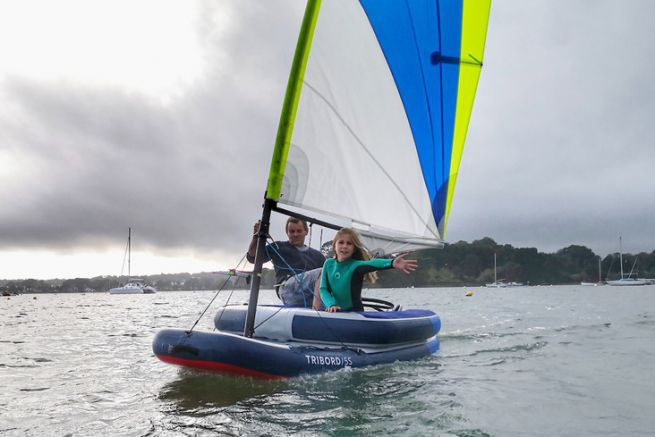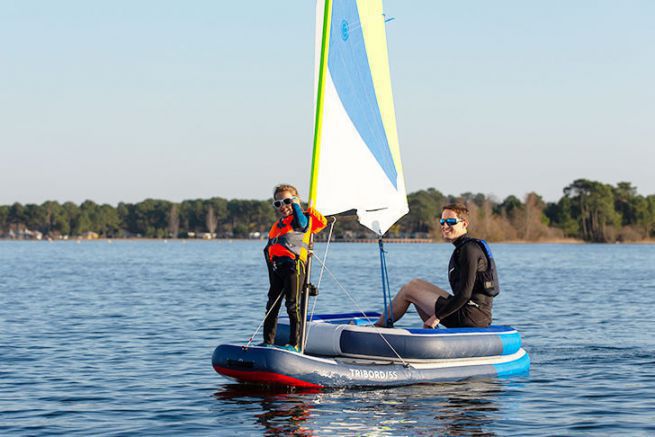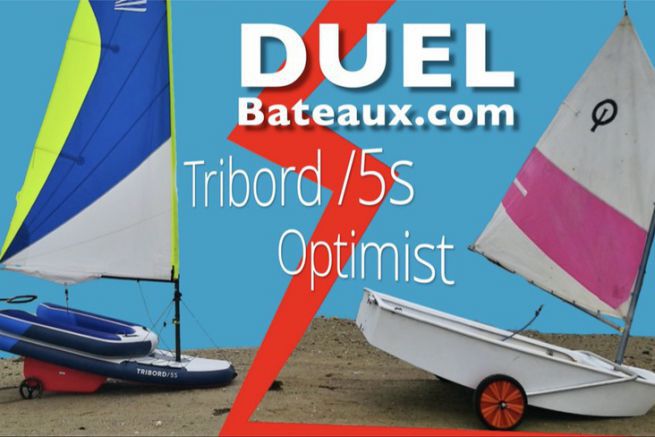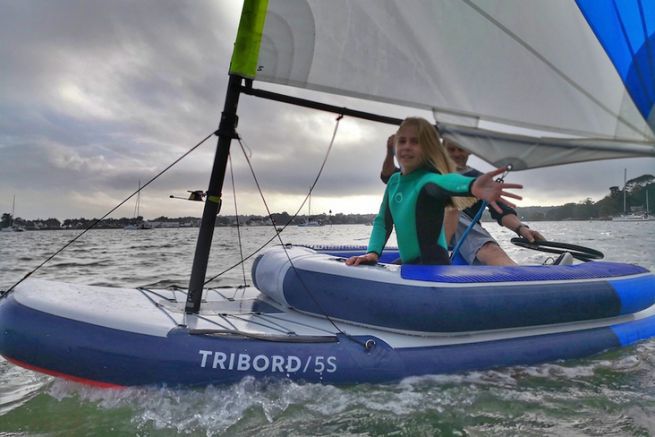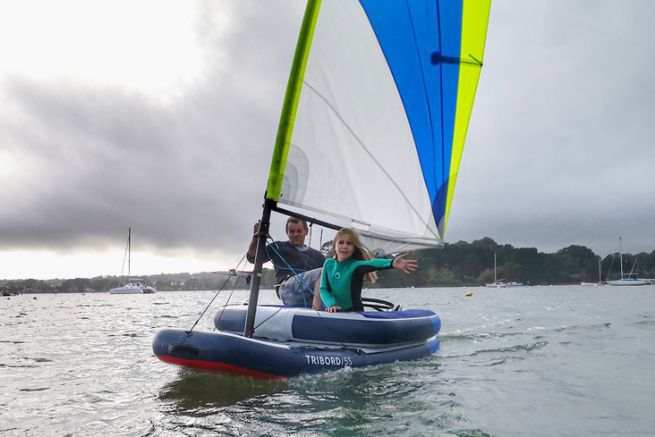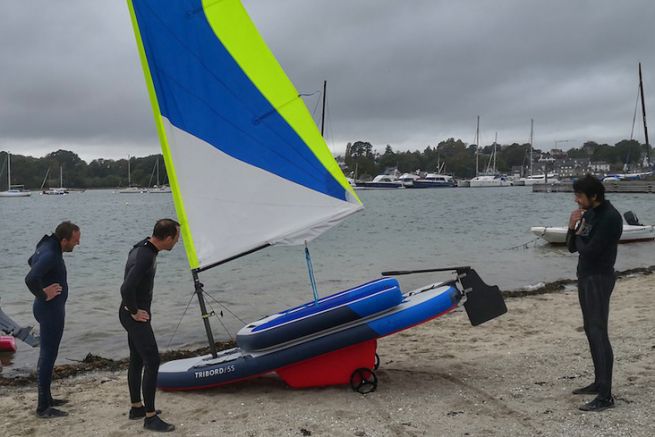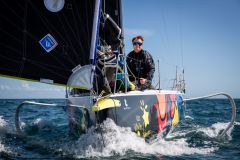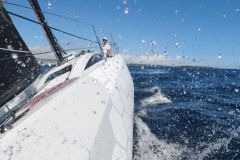Immediate boarding on board the Tribord 5S
Like all dinghies, once the boat is in the water, the bow is held so that it naturally faces the wind. To get on board, I go through the open stern. With one hand I grasp the snowshoe-shaped tiller, and with the other I grasp the mainsheet.
The first good impression is of the beach start and appendages, because unlike many dinghies, there is no need to install rudder and daggerboard away from the shore. They are already in position and there will be enough water at knee level for manoeuvring, for novices (and everyone else) this makes beach starts much easier.
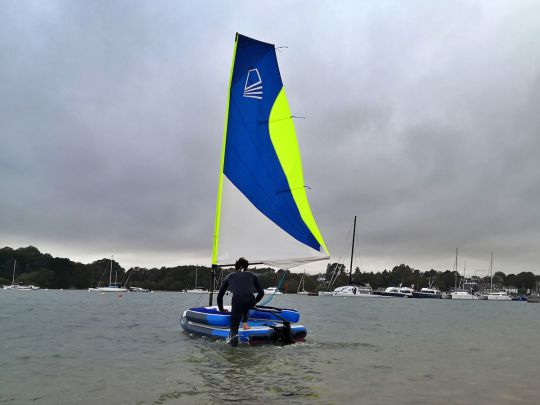
Climb aboard and slide on the water surface
At first, it's the only one I try the Tribord 5S . Intuitively, I sit on the pudding that seems to welcome me like a bench. A light breeze blows across the beam at 12 knots, I tuck in the mainsail and discover the first sensation of gliding. The boat is very light, just like a paddle, it's not sunk in the water. It only seems to glide over the surface of the sea and thanks to the generous sail, it accelerates immediately.
Then, I settle down more deeply, in fact I lie at my ease at the bottom of the platform with my back wedged to the top flange, the position is very pleasant for cruising. I also get down on my knees, and although this position is less comfortable, it still offers very good control of the boat. It's perhaps the most playful position, especially if you're slightly downwind to heel.
And as I discover that the bar swivels vertically, it makes me want to steer semi-upright. The feeling is very pleasant, between surfing, stand up paddle, windsurfing, and dinghy. Decidedly, this boat is already quite astonishing.
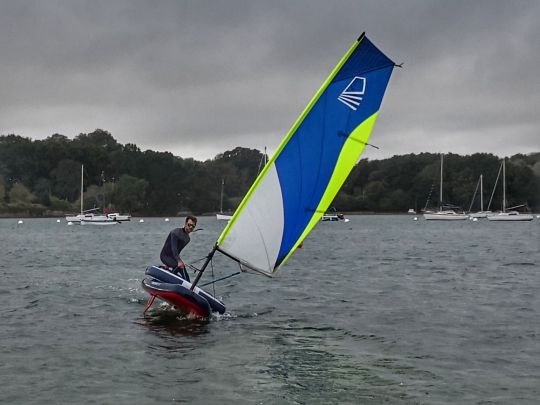
Stability, want it-tu?? To voilà?!
In a boat, stability and power are intimately linked. Decathlon's engineers have sought to give maximum stability/power to their small inflatable dinghy. Thanks to the width of the hull and by exploiting the scow concept (very wide boat at the bow), the Tribord 5S offers great stability of form and the crew will be able to exert a most effective counterweight.
In this way, the beginner will be able to find the balance necessary for learning and small mistakes will be forgiven without desalting. While more experienced users and a bit of a gamer will look for performance and acceleration through power and generous enough canopy.
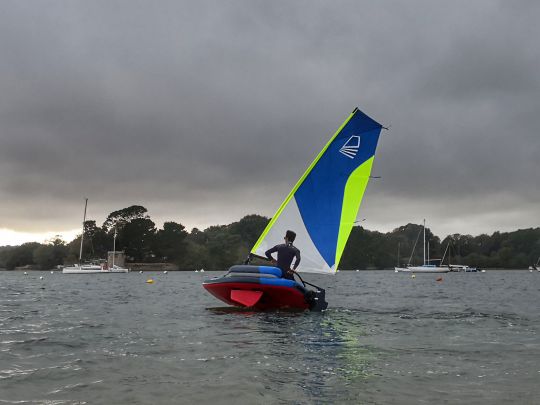
Might as well share the good things
In order to test the concept of a family boat, I take Lisa, one of my regular crew members, on board. We share out the roles, at first I keep the helm and she takes care of the mainsail. She settles down downwind, but that doesn't pose any problem of stability or safety thanks to the upper bulwarks which raise a deep cockpit. We swap places from time to time. On board there is plenty of room for both of us to manoeuvre, gybing and tacking can be carried out without difficulty.
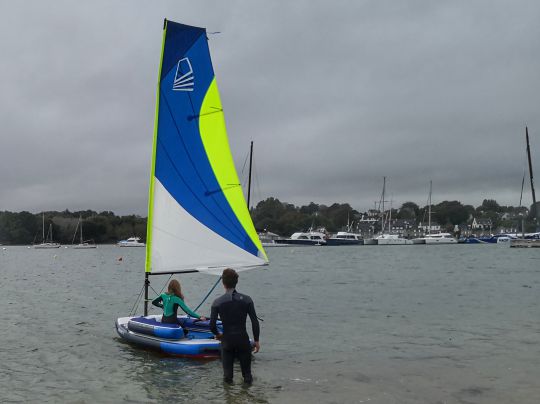
Once Lisa seems to be familiar with the boat, it's time to let her sail it alone. She doesn't seem impressed by the dinghy, which is much larger than the Optimist she knows. Her handling is ultra fast, I observe her from the beach and the stability of this boat reassures me enormously. There is little risk that I will have to swim to her to right the boat, and I suppose she could do it on her own despite her 35kg.
The other very reassuring point is the height of the boom, well above his head, which during gybes removes a level of stress. Everything in this boat seems to be designed to start off without putting off.
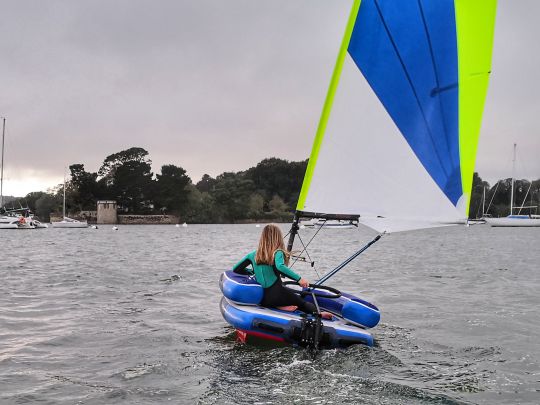
A dinghy player
It's good that children have fun, but parents are the guarantors of authority, so I use the professional aspect to steal his toy. To my great pleasure, now the wind is slightly stronger. It's blowing with a few ripples at 15 knots.
That way, I have fun accelerating as much as I can in small ripples. To do this, you have to play with stability and cause heeling by moving slightly downwind. The wet surface area decreases and the dinghy accelerates even more and becomes more and more fun. So I'm having fun with balance and stability without any real fear of tasting fresh water. At the tight release, I watch the wake tightening, it's already throwing this inflatable dinghy, what a great fun?!
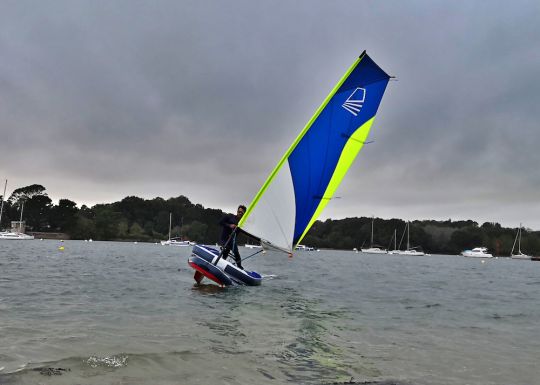
A desalination just to see
I still want to find the limits. I might as well tell you straight away that it's not that easy to desalinate with the Tribord 5S in these medium wind conditions. On the one hand, the very wide hull gives excellent initial stability and on the other hand, from a 20° heel, the upper bulges considerably increase the righting torque by raising the freeboard. I have to put all my weight downwind so that the dinghy ends up lying on the water.
I hadn't desalinated for a very long time and it seems to be like riding a bike, you can't forget it. Like all dinghies, I have to put my weight on the daggerboard to pry the boat up and straighten it.
So I'm going over to the other side of the hull. Intuitively and with a lot of ease, I use the lowest daggerboard to put my feet on it and take support. I discover a handle that I can use to grab onto the hull to exert my weight backwards and I effortlessly straighten the boat. To get back on board it's like when you leave the beach, you go through the back and use a handle to pull yourself up on the platform.
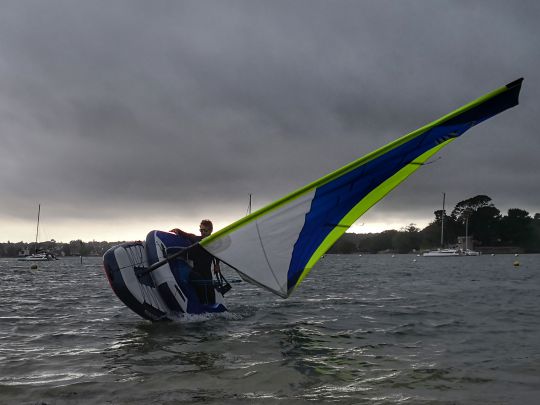
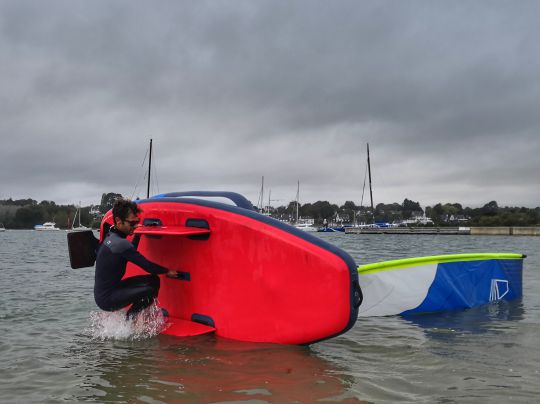
Manoeuvrability limits
The Tribord 5S with its extremely shallow draft offers great ease of use that matches the program and the target.
Pushing this dinghy into its entrenchments inevitably reveals the limits. Indeed, the wide and very short rudder will have a tendency to come out of the water with the heel, obviously you lose control of the boat.
The same applies when the rudder is in a free fall, if one is not careful to shock the mainsail, it may start to cavitate and lose its effectiveness to the point where it goes straight ahead instead of being knocked down.

 /
/ 